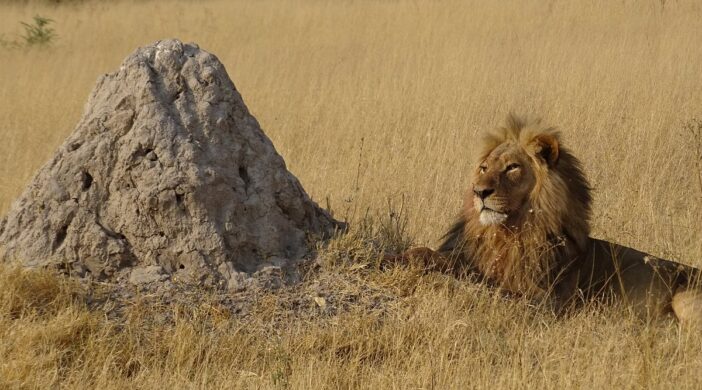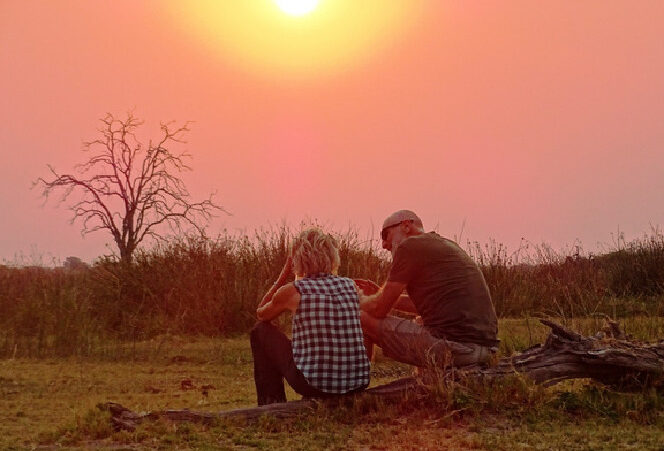Phone : +267 686 1341 | Mobile : +267 7180 4520 | Email: info@bushtravellers.com
Why Travel to Botswana
Botswana, a landlocked country in Southern Africa, has a landscape defined by the Kalahari Desert and the Okavango Delta, which becomes a lush animal habitat during the seasonal floods. The massive Central Kalahari Game Reserve, with its fossilized river valleys and undulating grasslands, is home to numerous animals including giraffes, cheetahs, hyenas and wild dogs.
Capital: Gaborone

Botswana is well known for having some of the best wilderness and wildlife areas on the African continent. With a full 38 % of its total land area devoted to national parks, reserves and wildlife management areas travel through many parts of the country has the feeling of moving through an immense Nature wonderland. For the most part parks are unfenced, allowing animals to roam wild and free.
Botswana is a rarity in our overpopulated, over-developed world. Experience the stunning beauty of the world’s largest intact inland Delta – The Okavango: the unimaginable vastness of the world’s second largest game reserve – The Central Kalahari Game Reserve: the isolation and other-worldliness of the Makgadikgadi – uninhabited pans the size of Portugal; and the astoundingly prolific wildlife of the Chobe National Park.
Botswana's climate is semi-arid. Though it is hot and dry for much of the year, there is a rainy season, which runs through the summer months. When it does rain, it tends to be episodic, unpredictable, and highly regional.
Often a heavy downpour may occur in one area while 10 or 15 km away there is no rain at all. Showers are often followed by strong sunshine so that a good deal of the rainfall does not penetrate the ground but is lost to evaporation and transpiration. 'Pula', one of the most frequently heard words in Botswana, is not only the name of Botswana's currency, but also the Setswana word for rain. Similarly, the word is used as a toast, where in other countries you might wish good health. So much of what takes place in Botswana relies on this essential, frequently scarce commodity.

Seasons in Botswana
With the exceptions of the early summer that bring searing heat, Botswana’s climate is one of its biggest drawcards. The summer season begins in November and ends in March. It usually brings very high temperatures. However, these high temperatures bring unstable conditions and rain. Rain and cloud cover can cool things down considerably, although only usually for short periods of time.
The winter season begins in May and ends in August. This is also the dry season when virtually no rainfall occurs. Winter days are invariably sunny and cool to warm. However, with no cloud cover, evening and night temperatures can rapidly fall reaching below zero in some areas, especially in the southwest.
The in-between periods - April/early May and September/October - still tend to be dry, but the days are cooler than in summer and the nights are warmer than in winter.
Destinations
Okavango Delta
The Okavango Delta is a vast inland river delta in northern Botswana. It's known for its sprawling grassy plains, which flood seasonally, becoming a lush animal habitat. The Moremi Game Reserve occupies the east and central areas of the region. Here, dugout canoes are used to navigate past hippos, elephants and crocodiles. On dry land, wildlife includes lions, leopards, giraffes and rhinos.
Moremi Game Reserve
Moremi Game Reserve is in northern Botswana, in the Okavango Delta, which becomes a lush animal habitat during seasonal floods. Dugout canoes are used to navigate past birdlife, hippos and crocodiles on waterways like the Xakanaxa Lagoon. On land, wildlife includes lions, leopards and rhinos. Safari camps are common, with several dotted around large Chief's Island and the forested Mopane Tongue Peninsula.
Chobe National Park
Established in 1968, Chobe National Park covers approximately 11,700 sq km, encompassing floodplains, swamps and woodland. The Chobe River forms the park's northern boundary, which includes four distinct geographical areas:
- The Chobe Riverfront
- The Ngwezumba pans
- Savuté, and
- Linyanti.
The most accessible and frequently visited of Botswana's big game country, the Chobe Riverfront, is most famous for the large herds of elephants and Cape Buffalo that converge on the riverbank to drink during the dry winter months.
During this season, on an afternoon game drive, you may see hundreds of elephants at one time. The main Serondella Road sometimes becomes impassable as scores of family herds cross the main road to make their way to the river to drink, bathe and play.
Driving the tracks and trails close to the riverbank, you may see as many 15 different species of animals on any one drive. Common species include waterbuck, lechwe, puku (endemic to this area), giraffe, kudu, roan and sable, impala, warthog, bushbuck, monkeys and baboons, along with the accompanying predators such as lion, leopard, hyena and jackal, who are never far away.
Take a river cruise – and you'll experience the park and wildlife from a completely different vantage point, getting up closer to hippo, crocodile and a mind-boggling array of water birds than you ever would on land. Over 460 bird species have been recorded in the park, making it one of Africa's premier venues for bird safaris. Common species include the Sacred Ibis, Egyptian Geese, the ubiquitous cormorants and darters, Spur-winged Geese, Pel's Fishing Owl, carmine Bee-eaters, most members of the kingfisher family, all the rollers, the unmistakable Fish Eagle, the Martial Eagle, and many members of the stork family.
The Chobe River rises in the northern Angolan highlands and travels vast distances before reaching Botswana at Ngoma. Like the Okavango and Zambezi rivers, the Chobe's course is affected by fault lines that are extensions of the Great Rift Valley. These three mighty rivers carry more water than all other Southern Africa rivers.
Book your dream safari today
